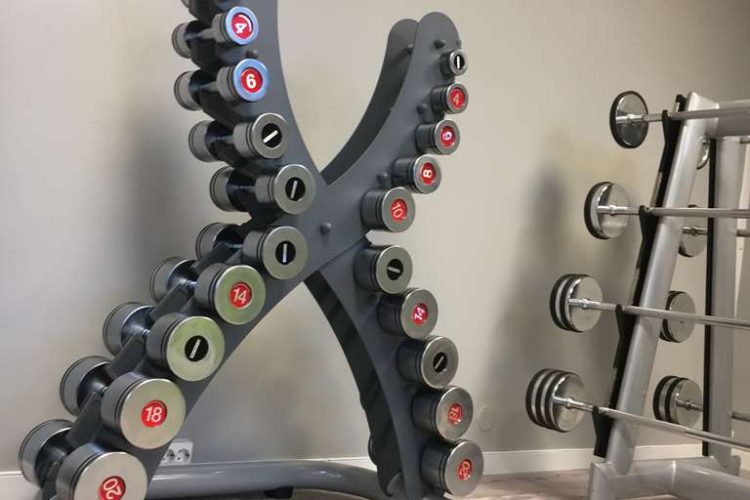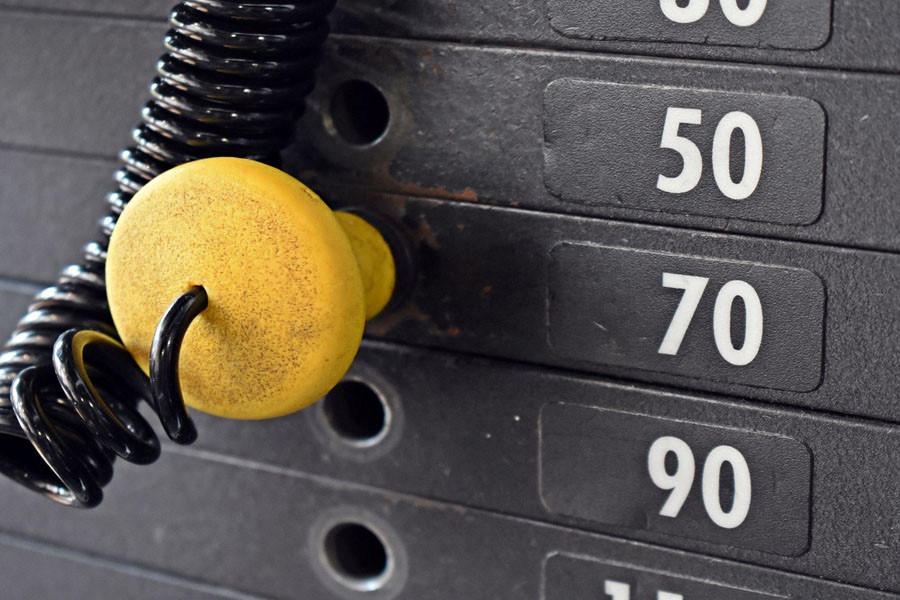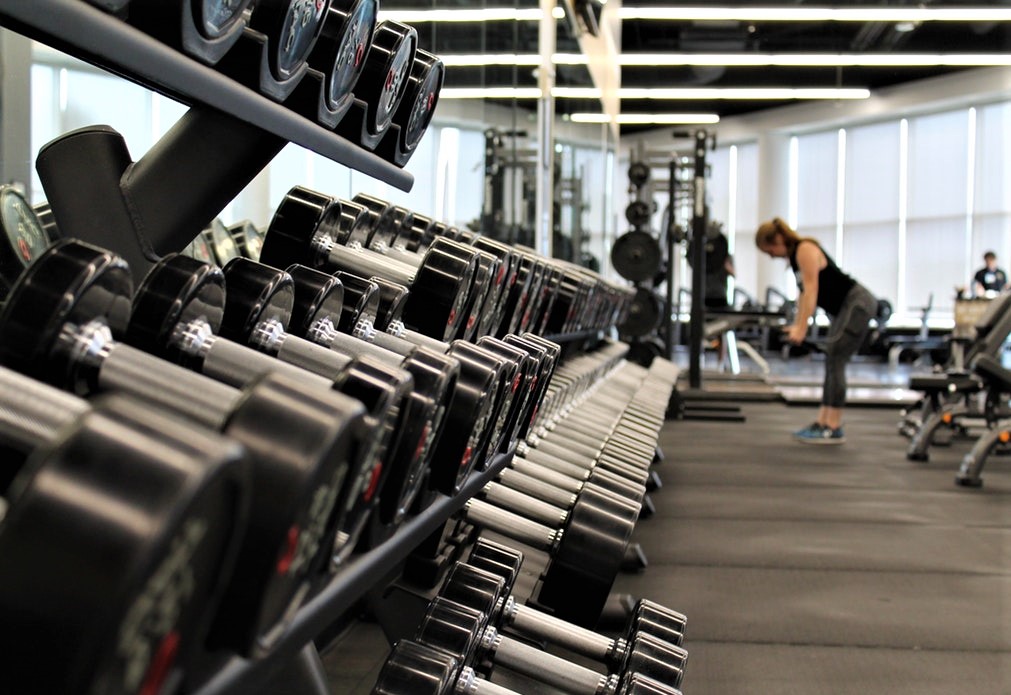Failure is temporary. When you can’t eke out another full rep, you’ve got options. Forced reps. Cheating. Rest-pause. Partials. But these probably limit you to just a few more reps, and they’re not a good fit for every exercise. Don’t even try forced reps on one-arm dumbbell rows, and cheating and walking lunges don’t mix. But you can grab a lighter dumbbell to keep the rows going or ditch the barbell and continue those lunges weight-free. Those are drop sets. A drop set allows you to run stop signs and keep going full speed ahead.
WHAT IS A DROP SET?
Whether you call it a descending set or drop set, it consists of a lighter subsets or subsets of the original set. For example, let’s say you do a set of pulldowns followed by two drop sets. If you get 10 reps with 170 on the first set, immediately select 150 and knock out another 10 reps. Then, having reaching failure with 150, reduce the weight to 120 and eke out a final 10 reps. So, you’ve hit 30 reps, pausing only long enough to lighten the load, but those 30 reps had three failure points (170, 150, and 120). Since it’s the last few reps before failure that most tax the muscles and thus stimulate growth, you’ve effectively tripled the growth factors within one extended set.
DROP SET (noun) a continuation of the original set beyond failure with a lighter weight. Origin: 1947 by Henry Atkin (originally called “The Atkin Multiple Poundage System”). Synonyms: descending set, strip set, down-the-rack, running the rack, up-the-stack
In many cases, one or two drops is enough. At other times, you’ll want to keep going. To make certain you’ve fully exhausted your targeted muscles, you may want to end your workout with an extended descending set. Machine exercises with weight stacks, like pushdowns or pulldowns, are ideal for cranking out more than three drops because all you need to do is insert the pin in a higher (lighter) slot each time. Another method for this is going “down the rack,” this means you use a lighter set of dumbbells for each drop, moving along the dumbbell rack as the weights shrink. As long as the gym isn’t too crowded, going down the rack is a great way to end a routine for delts (side laterals), traps (shrugs), or biceps (curls).
One big advantage of drop sets over other set-expanding techniques is the fact that they can be done alone. However, it’s important that you reduce the weight as fast as possible between subsets, so, like a pit stop crew, a spotter or two can make this go faster, sometimes without you even moving. Also, you may need to plan ahead. For example, if you know you’re going to do bench presses with two drops after eight reps with 225, don’t just slide 45s onto each collar. Instead, slide on the exact lighter weights necessary. Plot out your drops, so you can get, say, 185 and then 160, by merely stripping weights. And if you have a spotter on each side, this can be done in a few seconds while you lie on the bench.
BLOW-OUT DROP SET
So far, we’ve focused on subsets consisting of the same reps with lighter weights. There is another way. After a final low-rep set of an exercise, you may want to immediately follow with a set that is both lighter and higher rep. For example, if you pyramid up to a maximum four-rep set of shoulder presses with 225, you can strip a plate from each side just afterward and pump out as many reps as possible with 135, getting, say, 17. This taxes your muscles in two distinct ways (lower reps and higher reps) and assures that you bring nourishing blood to the targeted area after your strength-focused set.
In fact, drop sets are an excellent way to finish any routine, especially a bad one. Sometimes, for whatever reason, your strength and intensity are not up to snuff. You get near the end of a workout and realize you haven’t accomplished anything that day to stimulate new growth. That’s when an extended descending set can come to the rescue. Three or more drops of your final exercise, perhaps with a trip down the rack or up the weight stack, will assure you finish with a vein-popping pump while you also eke out every last rep you can with several growth-inducing failure points.

DROP SET ADVANTAGES
A drop set has four workout advantages.
MULTIPLE FAILURE POINTS
Like the original set, each drop set has its own failure point. And even if you don’t go to failure each time, you’ll be grinding out three times as many near-failure reps as a straight set of 25. But is this more effective? Multiple studies, such as this one, have demonstrated benefits, though it’s unclear if this is due to greater intensity or merely the increased volume.
SPEED
With minimal rest between drops, you cram more work into a routine, which is especially effective if you need to do a shortened workout.
PUMP-OUT
If you immediately follow a low-rep set with a much-lighter high-rep set, this boosts blood volumization, which the heavy set was lacking. It also gives you a second chance to push yourself to new limits if you failed to hit your target on the initial set.
WORKOUT RESCUE
In that same vein, sometimes, for whatever reason, your strength and intensity are not up to snuff. Near a bad workout’s end, an extended descending set can come to the rescue. Take a trip down the dumbbell rack or up the weight stack on a final extended set of your last exercise, and you can still turn a blah workout around.
DROP SET EQUIPMENT
The type of drop set you do depends on the equipment you choose.
STRIP SET
This is a drop set with a plate-loaded barbell or machine (such as Hammer Strength). Weights are stripped from each side for drops, so you’ll need to plot ahead—computing from your heaviest to lightest set—to quickly get to the right amounts via subtractions. With one or, ideally, two spotters as a pit crew, you can do zero-rest drops: Weights are pulled immediately after your last rep with a particular weight so you can do your first rep with lighter resistance without pausing. (Watch Jason Momoa do a 100-rep strip drop set here.)
DOWN THE RACK
This is a dumbbell or fixed barbell drop set. At a rack in an uncrowded gym, repeatedly move from two dumbbells to their lighter neighbors, or, set up fixed barbells to quickly switch from one barbell to a lighter one.
UP THE STACK
This is a drop set with a machine with a vertical weight stack. Reductions are easy. All you need to do is move the pin into a higher slot (lighter weight) each time on.

DROP SET REPS
Once you’ve chosen your equipment, then choose your rep scheme.
MAINTAINING
With this rep scheme, try to get the same number of reps on each drop as you did on your initial set. Aim for 20% weight reductions, so you might go from 10 x 225 lbs. to 10 x 180 lbs. to 10 x 145 lbs. When traveling down the rack or up the stack for multiple drops, you may be able to hit the same reps with only small weight reductions (from 45-pound dumbbells to 40-pounders, etc.) if you stay clear of failure or rest briefly (10-15 seconds) between drops.
ASCENDING
In this method, reps decrease with each drop (for example, from 12 to 8 to 4) with small weight reductions (5-10%). So, you might go from 12 x 200 lbs. to 8 x 180 lbs. to 4 x 170 lbs.
DESCENDING
And in this method, reps increase with each drop (for example, from 6 to 12 to 20) with big weight reductions (25-35%). So, you might go from 6 x 200 lbs. to 12 x 150 lbs. to 20 x 120 lbs.
HIGH
Cut the weight 40-50% for a pump-out or blow-out set. So, you might go from 225 lbs. for 6 reps to 135 lbs. for over 25 reps. As mentioned before, this is a great way to end a workout, whether or not it went as planned. Move the pin up the stack after your last set of 10 pushdowns and crank out a final 30.
DROP SET TRAINING TIPS
✷ This is the most efficient way to push a set beyond failure when training alone, but one or more spotters can help you reduce the weight faster in some exercises.
✷ Machine exercises with weight stacks allow you to reduce weights rapidly.
✷ Dumbbell and plate-loaded exercises may need preplanning to line up weights for easy access.
✷ Plate-loaded exercises may also benefit from one or two spotters to strip weights faster.
✷ You may want to do a higher-rep pump-out set of an exercise just after your final lower-rep set.
DROP SET CALF ROUTINE
Seated Calf Raise — 4 sets x 15 reps +15 reps
Standing Calf Raise — 4 sets x 10 reps +10 reps +10 reps
See also:
Cluster Sets: Complete Training Guide
















































